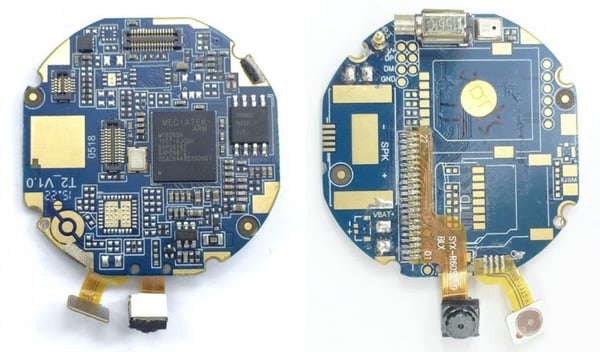February 28, 2020
 by Adriana Tica / February 28, 2020
by Adriana Tica / February 28, 2020

When you sell tech products or solutions to other engineers, everything’s simple: all they need is a data sheet.
But when your solution caters to a non-tech audience, things change dramatically. No one cares what’s on your PCB. Or how long it took to write the API code for your SaaS.
So, how do you write tech content for non-tech audiences? Let’s find out!
It’s quite tempting to write thousands of words about how hard it was to create your solution and how many geniuses worked on it, isn’t it? Or to dig deep into details about how your code has zero bugs and perfectly crafted comments.
It makes sense. You did a great thing and you want to brag about it. Who wouldn’t? But here’s the catch -- instead of who wouldn’t, you’re better off asking who cares about all this? Because one thing is sure: your clients don’t.
They don’t speak tech so they don’t even know why you need insightful comments amid your code lines. Here’s what they do care about instead.
Did you know that 55% of people read blog posts for 15 seconds or less? Yes, that’s right. And no, they're not super-fast readers. They just get easily bored with your content.
In fact, instead of reading, they actually scan the page looking for information that’s easy to digest and relevant to them. Do you know what neither of those things is? Hyper-technical content that’s focused on your product and your journey.
That’s not relevant to them. While your need to brag is perfectly understandable, it will not help you sell your product.
What will help you sell is telling your readers why they need your solution. Why it can solve their problems. Why their lives will be better after hitting the “buy” button. And yes, when it’s about them they will hang in there for more than 15 seconds. They will want to know exactly how your product or service can help them out.
Briefly put: make your customer the star of your content.
See how this section starts with “Did YOU know…?” That’s precisely what you need to do. The more “you” instead of “we” or “X product” you use, the more captivated the reader will be. After all, we’re all a bit self-centered, aren’t we?
A picture speaks a thousand words, right?
Take this one, for instance:

This image depicts the PCB (Printed Circuit Board) in a smartwatch. And yes, it speaks a thousand words. But only to engineers. If you’re selling PCBs or PCB design services, it’s a great idea to talk about them, why your PCBs are special and how all the components on them are flawless.
But a smartwatch buyer doesn't need to know all that. They don’t care about it. More importantly, they won’t understand a word you’re saying. So go easy with the jargon.
There will be times when you can’t avoid technical terms. For instance, you can’t speak about data cabling without mentioning the types of cables you use. When you do have to use technical terms, explain them right away without being patronizing. Keep the explanations simple and to the point. You want to move on from them quickly and get to what really matters: the selling points of your amazing product.
You can go crazy with the technical jargon ONLY if you’re selling to other engineers. Otherwise, your tech content writing should be translated into layman terms.
Any good content strategy for tech companies starts with laying down the goals. Typically, you don’t learn how to write tech content just to show off your skills. You learn it so that your content marketing can support your business goals.
This means that your tech content has to be converted to “marketing speak”. Drawing on the points above: don’t tell people how you did it. Tell them why you did it and why they need it.
When you hire tech content writers worth their salt, they won’t copy-paste your datasheet into a blog post. Instead, they will take the information there and turn every single product feature into a benefit for the buyer.
Let’s look at some examples:
You don’t have to come up with benefits out of the blue. Just take a look at your list of features then think about why you added them. The reasons are surely benefits for your users. Write that instead of the features.
You’ll know exactly how to write your tech content if you look at how your audience searches online. In fact, these searches might shape your entire content strategy for tech products.
For instance, let’s say you sell a social media management tool. You already know that you shouldn’t write about how your solution uses the Facebook API to deliver great reports. Marketers are your audience and they don’t need to know that.
What do they need to know then? Well, let’s take a look at what they search for.

This search started with a broad query: your product, “social media management tool”. If you scroll down to the bottom of the SERP, you’ll see a list of related searches.
At a glance, you can tell that people want to know:
You’ve got at least five content ideas right there. For bonus points, you can easily click on each of these suggestions and go even more in-depth with your research on what your audience is really interested in.
This is just an example of how to make user intent your key focus. You can also use surveys, ask your audience via email or social media. When in doubt about user intent, don’t assume, ask!
Tech content writing isn’t an exact science. So you’ll have to tweak your content strategy as you go. But you can’t do that if you don’t measure your results. So, where do you start measuring? First off, you set the content marketing KPIs that are relevant to you.
They can be:
More importantly, you should use KPIs that can be easily tracked to your business goals. These are the KPIs that bring you cold, hard cash.
A few examples:
Every company is different, but you get the gist. If you can track a dollar back to your tech content strategy, you should always put in the effort to do so. This way, you’ll know exactly what your audience responds to and what type of content to create more of in the future.
If you need to read more about measuring and tracking, you can check out this in-depth article about content marketing KPIs.
Pro tip: Start measuring your efforts early on, but don’t expect results with a single blog post. Content marketing takes time to work, even in the tech space. The good news is that, when it does start to work, it will produce results for years.
Buffer co-founder Leo Widrich wrote 150 guest posts in nine months. This got them their first 100,000 customers. This may seem like an impressive number, but what’s more impressive is the commitment and the amazing results tech content writing can bring if done properly. There are countless tech companies that had their big break all through content marketing. Even big names like Cisco.
Yes, content marketing works wonders for tech companies. But only if you can put your product aside for a moment and focus on your customers’ needs. Instead of writing with your product in mind, think about how your customers would use that product. How would they interact with it? What would give them the greatest joy or fulfillment? Which are the top pain points you can solve for them?
Write about that and you will win their hearts (and their wallets).
Adriana Tica is an expert marketer and copywriter, with 10 years in the field, most of which were spent marketing tech companies. She is the Owner and Founder of Idunn. In October 2019, she also launched Copywritech, a digital marketing agency that provides copywriting, SEO content writing, and strategy services to companies in the tech industry.
Sometimes, our most valuable skills are the ones we don’t even realize we have.
 by Rob Browne
by Rob Browne
It might seem like virtual reality (VR) technology has only been around for a few short years.
 by Andrej Kovačević
by Andrej Kovačević
Technical SEO. A short phrase that has been known to strike fear into the hearts of SEOs and...
 by Ken Marshall
by Ken Marshall
Sometimes, our most valuable skills are the ones we don’t even realize we have.
 by Rob Browne
by Rob Browne
It might seem like virtual reality (VR) technology has only been around for a few short years.
 by Andrej Kovačević
by Andrej Kovačević


